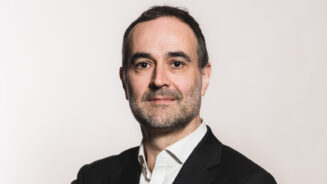What are the main synergies of life companies and fund management businesses joining forces in the way Aberdeen and Standard Life have done?
I wouldn’t want to put words into my potential new colleagues’ mouths but if you have a look at some of the statements, they don’t really see themselves as a life company. They have been turning themselves into an investment company that has a life and pensions distribution capability. This accelerates their desire to become a global investment management company with a strong life, pensions and wealth capability.
This is more about the synergies and benefits of combining the two investment arms, rather than about what it brings as part of a life, pensions and wealth effort.
Do you agree the pension side and other decumulation-focused products has been more of a focus for the life companies?
I’m not sure about that. The components those life companies use is provided by firms such as Aberdeen. If you have a look at our DGF or Multi-Asset Income funds, or our single strategy or emerging market capabilities, they are all being selected and deployed by insurance companies, either as solutions or as part of their balance sheet diversification strategy.
I see it more as a hand-in-glove thing, rather than one becoming dominant over the other. That also shows we will be the largest manager of outsourced insurance asset in the world.
It also gives the firm a strong, long-term foundation that we can put a lot of other strategies on and ensure we remain stable for the long term. The Scottish Widows acquisition by Aberdeen a few years back improved the firm’s diversity and stability.
How critical do you think scale is for financial services businesses in future?
You either remain very small, as a boutique, or you get very large. Unless you sit your business on a world-class, super-efficient platform that lowers your unit cost, it’s very difficult to compete.
The majority of the synergies for Aberdeen and Standard Life are going to come from the fact we will have two firms sitting on one technology platform and all the efficiencies that will bring.
What insights can you give on the Brexit strategy for the combined companies?
In relation to Aberdeen, we’ve got Scottish and UK-operating subsidiaries, businesses and companies. They are all appropriately licensed. We’ve got EU-regulated and licensed operating, managing subsidiaries. US and Asia. Basically, whatever Brexit ends up as, the firm has all the necessary permissions, and country and regional presences to deal with anything that happens.
We are quite comfortable we can continue to satisfy all our equivalency, substance and permission tests. The footprint of the firm, its regulatory positions, where it gets business from and where it conducts business makes it quite resilient.
What was the attraction of establishing your first presence in the Middle East, in Abu Dhabi rather than the DIFC in Dubai?
We’ve got a significant footprint in the region for running money for clients. Clients really appreciate you are not just flying in and flying out but showing a commitment to the region. As for Abu Dhabi versus Dubai, Aberdeen has always done things differently.
When we set up our Singapore office in 1992, all the other groups were going to Hong Kong. The great thing about Aberdeen is its long-term approach, as evidenced in starting businesses in Indonesia and what was done in Singapore.
What’s your main achievement in the six months since you joined Aberdeen?
We’ve been trying to raise the work ethic and output of the salesforce, making sure we are truly customer-focused. We have also been trying to make our clients aware that we are more than just an emerging markets house. We’ve got a big, active quant business, so we’ve got a potential better-value proposition than passive for clients who want lower volatility and potentially some lower costs.
Our emerging market and high-yield capabilities are significant, our real assets and alternatives are strong. I’ve been observing for many years that clients want to do more with fewer partners. The regulatory burden is significant, so if you can cut your relationships from 200 to 20, you’re going to be able to build a better, stronger proposition for end clients than you might necessarily do by trying to cover the whole waterfront.
That’s why I’m excited about the merger. It gives more breadth, depth and product to some of the world’s best client relationships.




